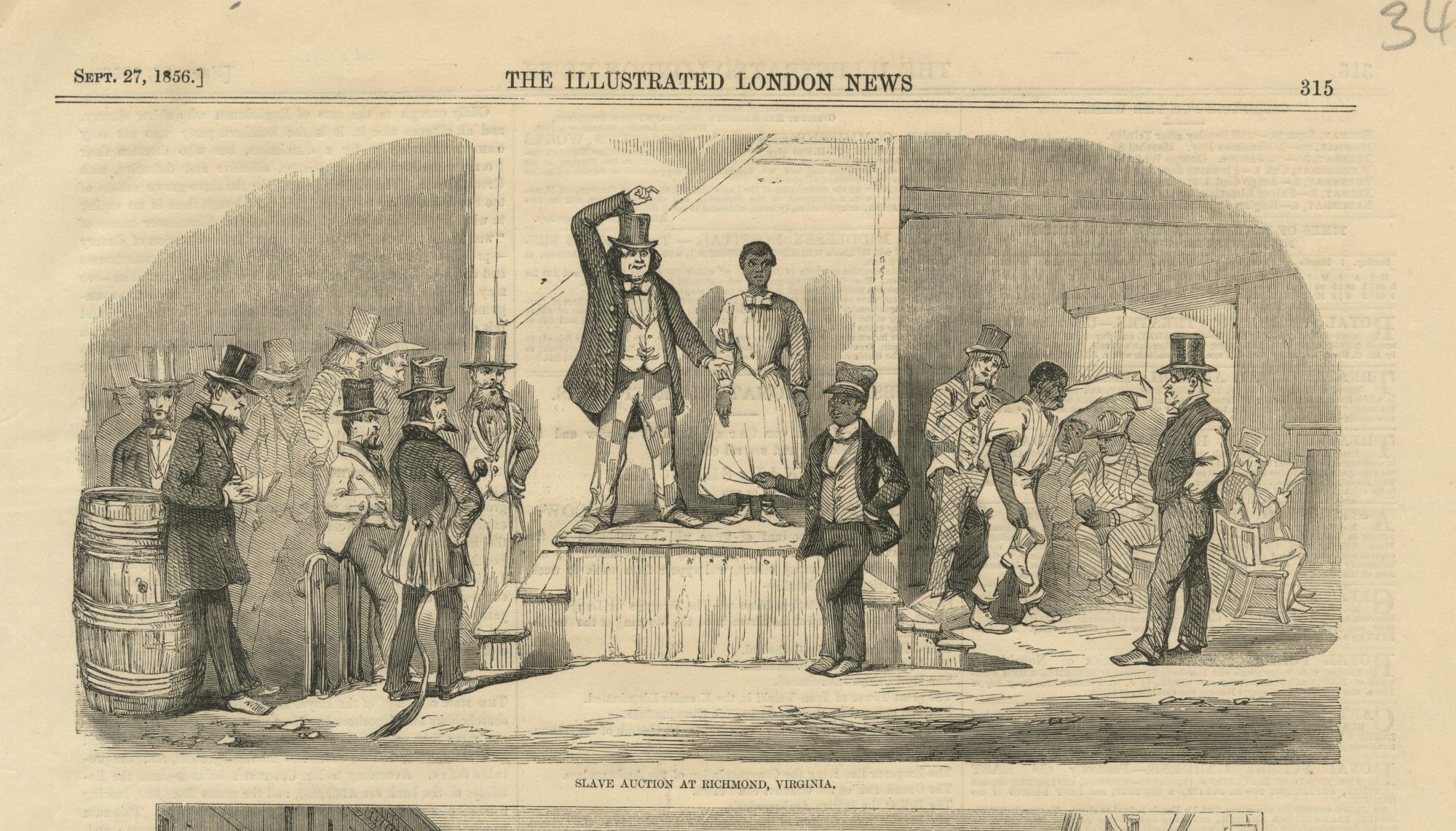The Stories We Hope to Tell at The Shockoe Institute
By Dr. Gregg D. Kimball, Shockoe Institute Senior Historian
Richmond, Virginia’s Shockoe Slave Market, on land approximately one block southwest of the Institute. Published in the ‘London Illustrated News’ in 1856. Courtesy Library of Virginia.
My passion is interpreting the past for the public in ways that make it meaningful to their everyday lives. I’ve enjoyed a long career curating exhibitions, presenting programs, and helping visitors discover their own stories through research. My brief retirement late last year ended with a visit from our President and CEO Marland Buckner and his offer to join the Shockoe Institute as its Senior Historian.
Marland is very persuasive, but, in truth, it was an easy decision. The Institute’s mission and values are aligned with my own, especially its devotion to scholarly rigor in public storytelling. I am also confident that it is uniquely positioned to succeed.
I believe that our country’s struggle to advance human freedom is deeply rooted in Richmond’s soil; but that story has never been adequately told. Americans have rightly celebrated those who brought forward ideas of liberty and equality, but we can learn as much about the concept of freedom from those who were denied it and the systems that kept them in bondage. Their experiences and aspirations must be recognized. I hope to bring to bear my many years of research and writing on our city to create a profound and historically accurate experience for visitors.
I have seen many plans come and go related to Shockoe Bottom during my long public history career in Richmond. In the Shockoe Institute, I saw an organization that had the expertise, financial support, and -- most importantly -- the leadership to create a world-class site of history, memory, and community-building. At long last, this sacred site will get the recognition it deserves.
One of the key values that the Institute’s team and I share is a dedication to a rigorous and unblushing look at our past and present. This does not mean the mere recitation of facts. It requires a deep, analytical approach to produce full and nuanced storytelling. The Institute has already engaged with numerous leading scholars to test our themes and discover new research. I can say this with confidence: The academic rigor here is unmatched in my career. We are telling some of these stories for the very first time.
We are committed to a continuous process of scholarly engagement to test our assumptions, shape the questions we ask, and explore new ideas in the future. I have worked at and consulted with many historical and cultural sites for more than forty years. The constant demands of everyday operations often take precedent over the continuous improvement of content that is delivered to the public.
There is frequently a considerable gap between the latest research and the knowledge easily available to the public. Closing that gap is hard. It means dedication to a process of constant research and re-thinking; translating sometimes opaque academic writing into accessible storytelling; and thinking creatively about the role of art, music, and other disciplines in our work. My experience at the Shockoe Institute gives me great confidence that we are ready to tackle these challenges.
When I wrote my book American City, Southern Place more than twenty years ago, I realized that at some point it would be superseded. Luckily, it is still widely recognized as an essential work on Richmond, but, if I wrote it today, it would no doubt be a different work because of the new knowledge, insights, and interpretations that my colleagues have produced in the intervening years.
Unlike a set-in-type book, Shockoe Institute and its products can and will evolve, bringing the latest and most accurate version of our past to the understanding of our present and future.

